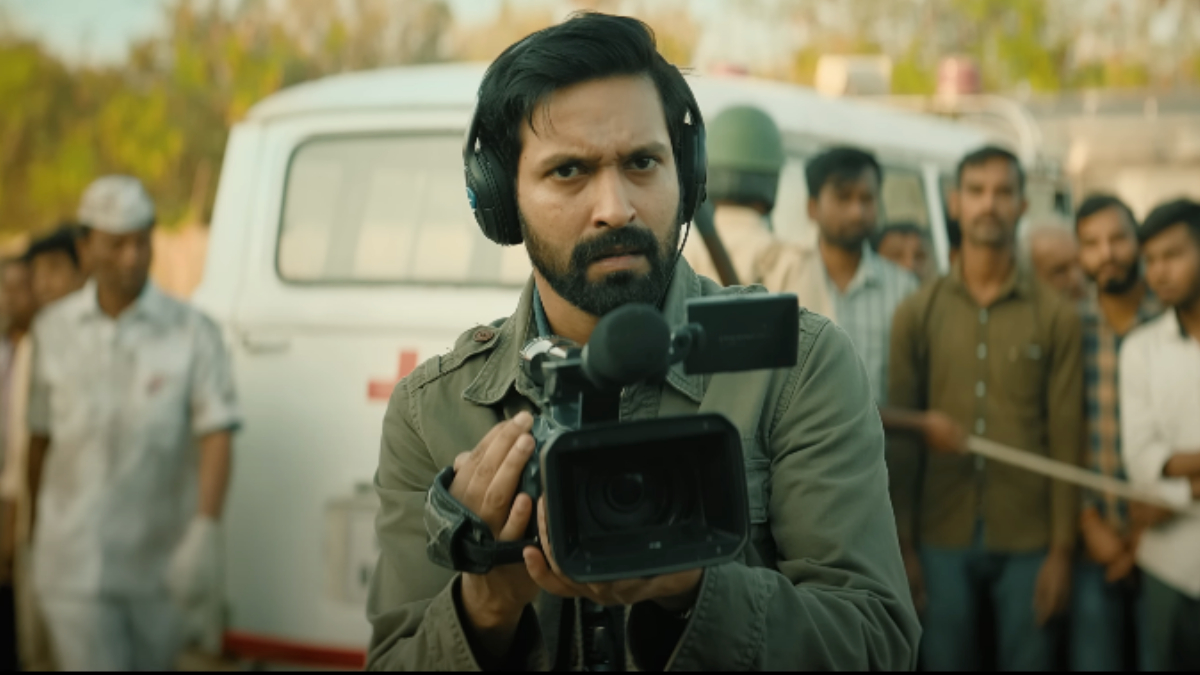Director: Dheeraj Sarna
Cast: Vikrant Massey, Raashii Khanna, Riddhi Dogra
Where: In Theatres
Rating: **1/2
Director Dheeraj Sarna’s The Sabarmati Report ambitiously treads into the sensitive terrain of the 2002 Sabarmati Express carnage, attempting to be both a tribute to the 59 lives lost and an exposé on justice denied. But while it stirs memories of that dark episode, the film feels as much opportunistic as it does sincere, carefully constructed to tug at the audience’s conscience even as it grapples with its own motivations.
The story follows Samar Kumar (Vikrant Massey), a Delhi-based broadcast journalist reluctantly covering celebrity gossip for EBT News. However, fate, or rather, newsroom politics, reroutes him to Godhra with the network’s poised English anchor, M.ka Rajpurohit (Riddhi Dogra). There, Samar stumbles into a web of “news management” that shakes his journalistic faith, ultimately costing him his job. Five years later, Samar, still disillusioned but guilt-ridden, teams up with Amrita Gill (Raashii Khanna), a zealous newcomer, to investigate the very incident that once cost him his career. Together, they set out to challenge the official version, suspecting an orchestrated conspiracy.
Sarna’s film doesn’t merely suggest a conspiracy; it throws viewers into a narrative maze where truth seems optional, and “news is the truth you choose to bring out.” This catchphrase echoes throughout, as the film presents a no-holds-barred critique of the media’s ties to political influence, making the audience question the sanctity of the Fourth Estate. But for all its daring, the docudrama format often slips into theatricality, with scenes feeling unnaturally staged. Real-life footage is woven into the film to heighten authenticity, yet its placement seems almost too aware of itself, leaving us to wonder if this is a tribute or a sales pitch.
Shrewdly crafted, the film offers no revelatory truths unearthed by Samar and Amrita’s efforts, and no attribution to any real-life journalist whose investigative courage might lend the story more substance.
Amalendu Chaudhary’s cinematography captures the grit that the story demands. His lens lingers on strained expressions, wistful glances, and scenes of quiet devastation, bringing hum.ty to a story that is at risk of becoming merely rhetorical. Yet, the direction doesn’t always match the visual potential. At times, the film over-rehearses its messages, undermining the natural flow of the narrative.
Vikrant Massey, Riddhi Dogra, and Raashii Khanna put in strong performances, but their efforts feel restrained as if held back by the film’s reluctance to commit to its message fully. And despite the swelling chords of “Hum Hindust.” in the soundtrack, the patriotic fervour it aims for feels more like a nod to the genre than a genuine expression. The film closes with a mention of Ayodhya and Lord Ram, an almost obligatory nod to the larger ideological landscape. These feels shoehorned in rather than a natural thematic progression.
Overall, the film walks the line between investigative drama and calculated spectacle. It questions media ethics, but one can’t help but question the film’s own. Is it really shedding light on the truth, or merely packaging it for maximum impact? The lines between news, narrative, and nostalgia blur, leaving the audience to decide if they’ve seen an exposé—or just another story.

